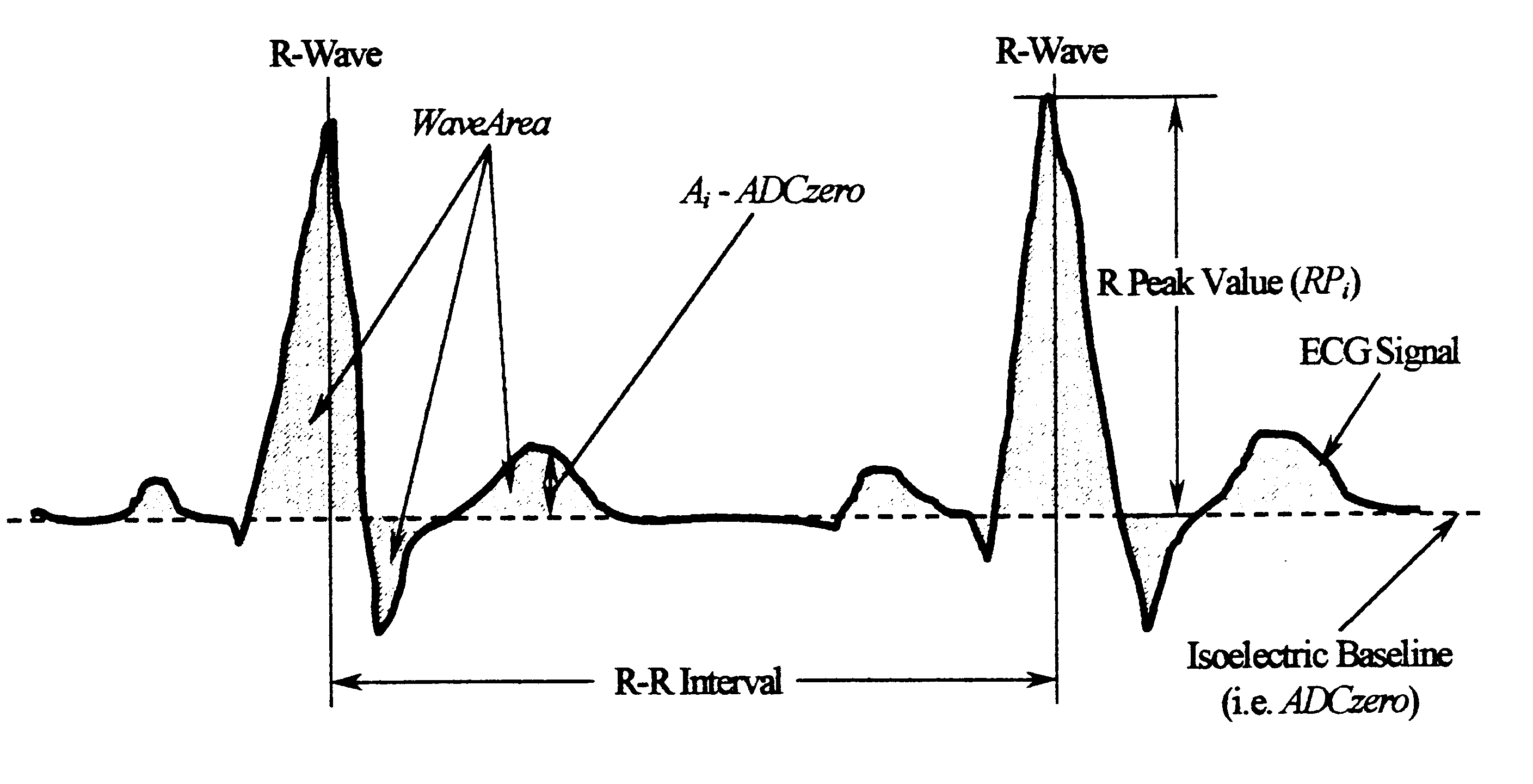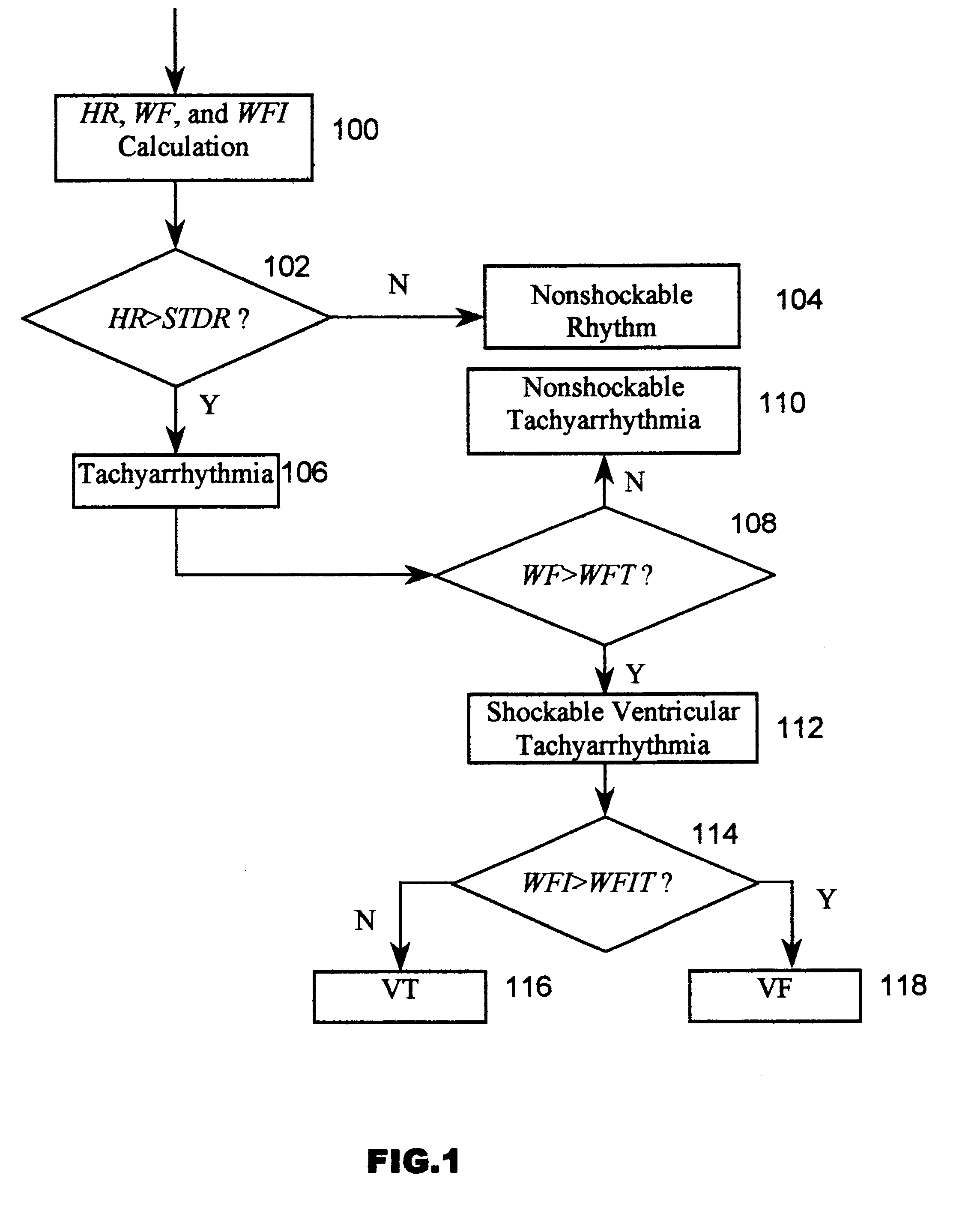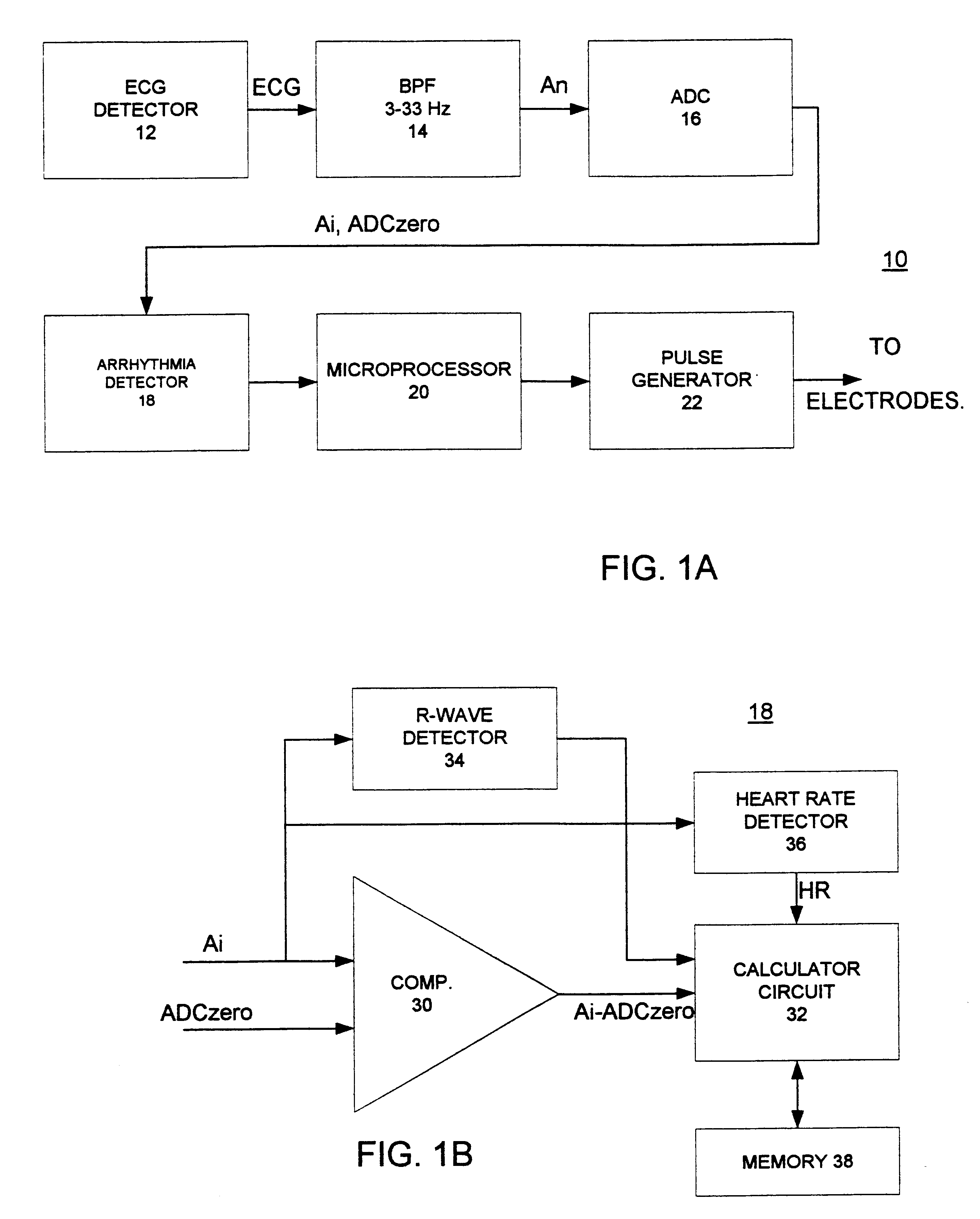Cardiac arrhythmia detector using ECG waveform-factor and its irregularity
a detector and waveform factor technology, applied in the field of detectors, can solve the problems of high death rate, unfavorable patient survival rate, and major public health problems of sca, and achieve the effects of avoiding unnecessary shock, improving patient comfort, and significant energy savings of battery powered devices
- Summary
- Abstract
- Description
- Claims
- Application Information
AI Technical Summary
Benefits of technology
Problems solved by technology
Method used
Image
Examples
Embodiment Construction
The ECG signals were digitized in the rate of 128 samples per second with a 12-bit A / D resolution, and as described above in FIGS. 1A, 1B, 1 and 2.
First, some nonshockable rhythms and their WF statistical values (mean .+-.SD) are illustrated in FIGS. 3A-3E. An example of sinus rhythm (SR) suddenly changing into supraventricular tachycardia (SVT) is shown in FIG. 3A. An example of sinus tachycardia (ST) is shown in FIG. 3B, an example of atrial fibrillation (AF) with high heart rate (HR) in FIG. 3C, an example of SVT from patient with left bundle branch block (LBBB) is shown in FIG. 3D, and another example of SVT with aberrant conduction is shown in FIG. 3E. The WF values for each of these rhythms are all below one threshold (such as 30 percent). For these nonshockable rhythms, the waveform-factor irregularity (WFI) does not need to be calculated. The value of parameter WF for these waveforms is listed below:
Several shockable tachyarrhythmias and their WF and WFI statistical values a...
PUM
 Login to View More
Login to View More Abstract
Description
Claims
Application Information
 Login to View More
Login to View More - R&D
- Intellectual Property
- Life Sciences
- Materials
- Tech Scout
- Unparalleled Data Quality
- Higher Quality Content
- 60% Fewer Hallucinations
Browse by: Latest US Patents, China's latest patents, Technical Efficacy Thesaurus, Application Domain, Technology Topic, Popular Technical Reports.
© 2025 PatSnap. All rights reserved.Legal|Privacy policy|Modern Slavery Act Transparency Statement|Sitemap|About US| Contact US: help@patsnap.com



